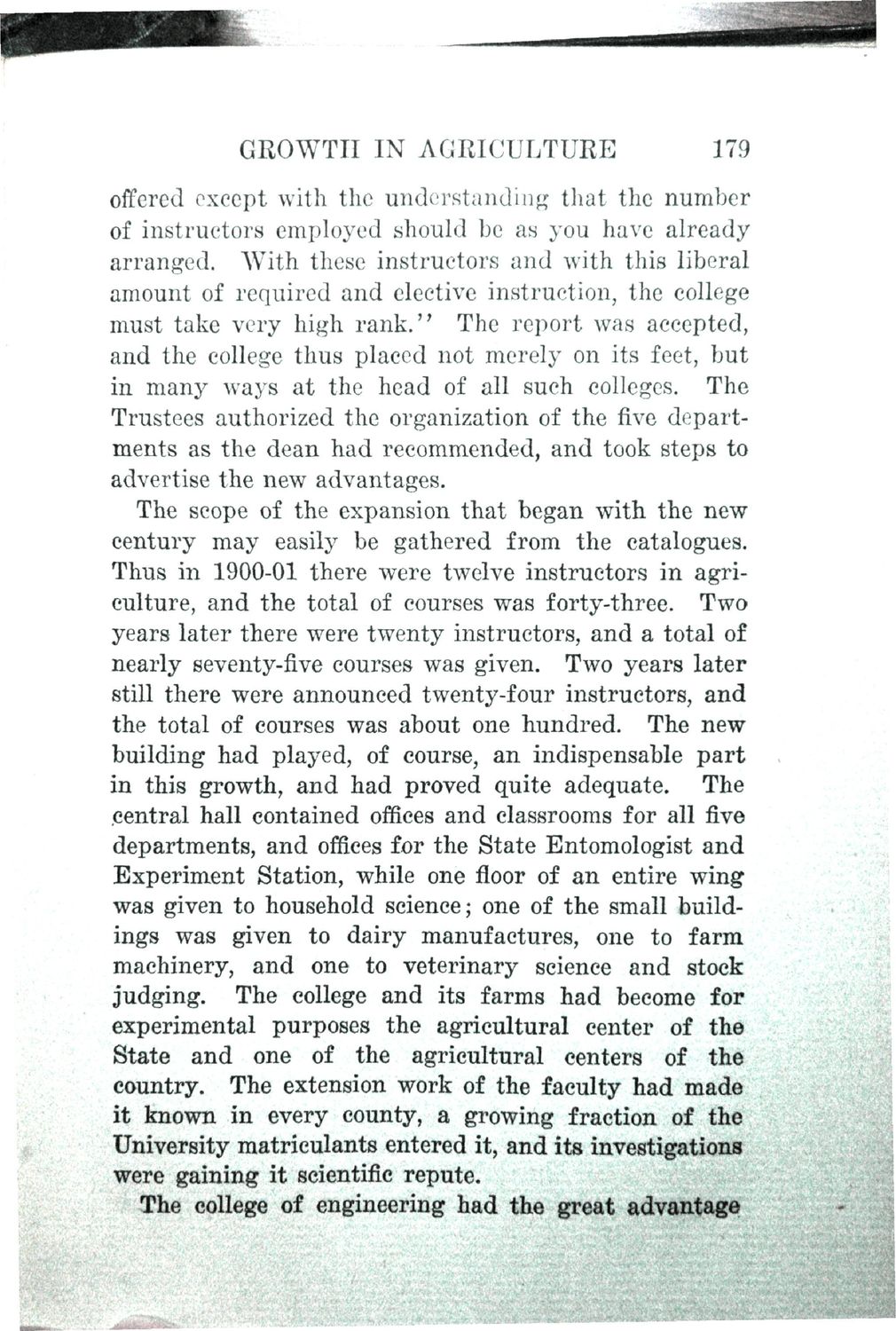| |
| |
Caption: Book - History of the University (Nevins)
This is a reduced-resolution page image for fast online browsing.

EXTRACTED TEXT FROM PAGE:
GROWTH IN AGRICULTURE 179 offered except with the understanding that the number of instructors employed should be as you have already arranged. With these instructors and with this liberal amount of required and elective instruction, the college must take very high rank." The report was accepted, and the college thus placed not merely on its feet, but in many ways at the head of all such colleges. The Trustees authorized the organization of the five departments as the dean had recommended, and took steps to advertise the new advantages. The scope of the expansion that began with the new century may easily be gathered from the catalogues. Thus in 1900-01 there were twelve instructors in agriculture, and the total of courses was forty-three. Two years later there were twenty instructors, and a total of nearly seventy-five courses was given. Two years later still there were announced twenty-four instructors, and the total of courses was about one hundred. The new building had played, of course, an indispensable part in this growth, and had proved quite adequate. The central hall contained offices and classrooms for all five departments, and offices for the State Entomologist and Experiment Station, while one floor of an entire wing was given to household science; one of the small buildings was given to dairy manufactures, one to farm machinery, and one to veterinary science and stock judging. The college and its farms had beeome for experimental purposes the agricultural center of the State and one of the agricultural centers of the country. The extension work of the faculty had made it known in every county, a growing fraction of the University matriculants entered it, and its investigations were gaining it scientific repute. The college of engineering had the great advantage
| |